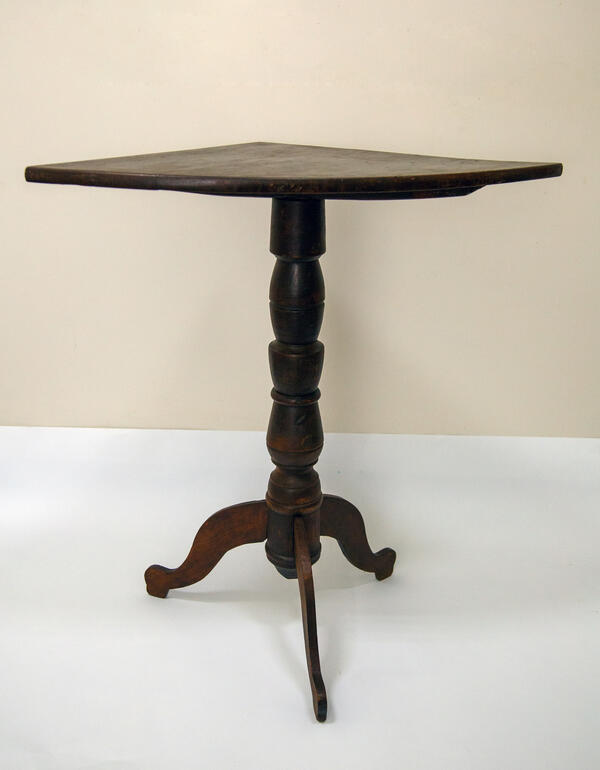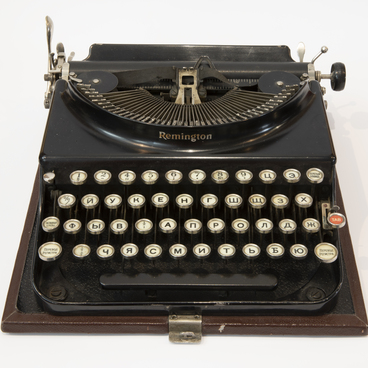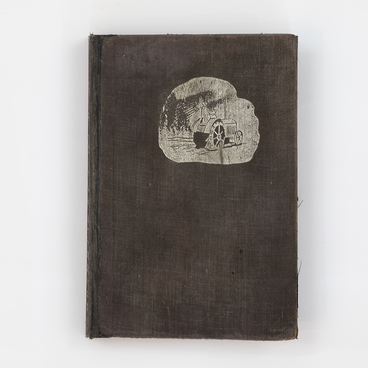A corner table was the most important piece of furniture in a kuren, a Cossack house. The table was placed in the icon corner of the kuren. A Cossack hut usually had two rooms: a large and a small one. The small room housed a Russian stove, long wooden benches, and a table. The large room was intended for the custom-made furniture, including a small cupboard known as a “gorka”, a chest of drawers for clothes, and storage chests. The most important part of a house was the red or icon corner. This is where the corner table was placed.
It had a triangular top, with one rounded side, a central carved leg, and three more legs. The parts were joined using pins or glue. Tables were usually made of wood and painted with stain and brown varnish. The table was covered with a round intricate lace cloth.
Such a table was used for storing the sacred and most precious possessions: icons, candles, Easter eggs, a prayer book, the Gospels, and other items. The icons in the red corner were associated with the altar of an Orthodox church, and the table was identified with a communion table. The icon corner was normally oriented to face east.
Every visitor of the house would first of all make the sign of the cross in front of the icon case. It was often made in the form of a large kiot, a special case or glass shelf with the images of saints, and was decorated with rushniks, embroidered cloths. Only highly honored guests could be seated in the red corner.
According to a custom of old standing, when a young Cossack was conscripted into the army, his parents took an icon from the sacred corner, the image of Christ or Saint Nicholas, and blessed their son. They would then put a Saint George medallion necklace on him and sew a small icon into his clothes to protect their son against death and enemy bullets. The Cossacks would then go to church where the priest held a service before their parting.
When the warrior came back, festivities were organized at the house. His parents would put on their best clothes, take an icon from the sacred corner and go outside to the wicket gate to meet their son.
After that, the icon was returned to the corner table, and the Cossack’s medallion was placed beside it. According to a later tradition, the table also featured a beautiful box with the awards and the icon that the Cossack had taken along for his military service. Such icons were handed down from fathers to their sons.
It had a triangular top, with one rounded side, a central carved leg, and three more legs. The parts were joined using pins or glue. Tables were usually made of wood and painted with stain and brown varnish. The table was covered with a round intricate lace cloth.
Such a table was used for storing the sacred and most precious possessions: icons, candles, Easter eggs, a prayer book, the Gospels, and other items. The icons in the red corner were associated with the altar of an Orthodox church, and the table was identified with a communion table. The icon corner was normally oriented to face east.
Every visitor of the house would first of all make the sign of the cross in front of the icon case. It was often made in the form of a large kiot, a special case or glass shelf with the images of saints, and was decorated with rushniks, embroidered cloths. Only highly honored guests could be seated in the red corner.
According to a custom of old standing, when a young Cossack was conscripted into the army, his parents took an icon from the sacred corner, the image of Christ or Saint Nicholas, and blessed their son. They would then put a Saint George medallion necklace on him and sew a small icon into his clothes to protect their son against death and enemy bullets. The Cossacks would then go to church where the priest held a service before their parting.
When the warrior came back, festivities were organized at the house. His parents would put on their best clothes, take an icon from the sacred corner and go outside to the wicket gate to meet their son.
After that, the icon was returned to the corner table, and the Cossack’s medallion was placed beside it. According to a later tradition, the table also featured a beautiful box with the awards and the icon that the Cossack had taken along for his military service. Such icons were handed down from fathers to their sons.






